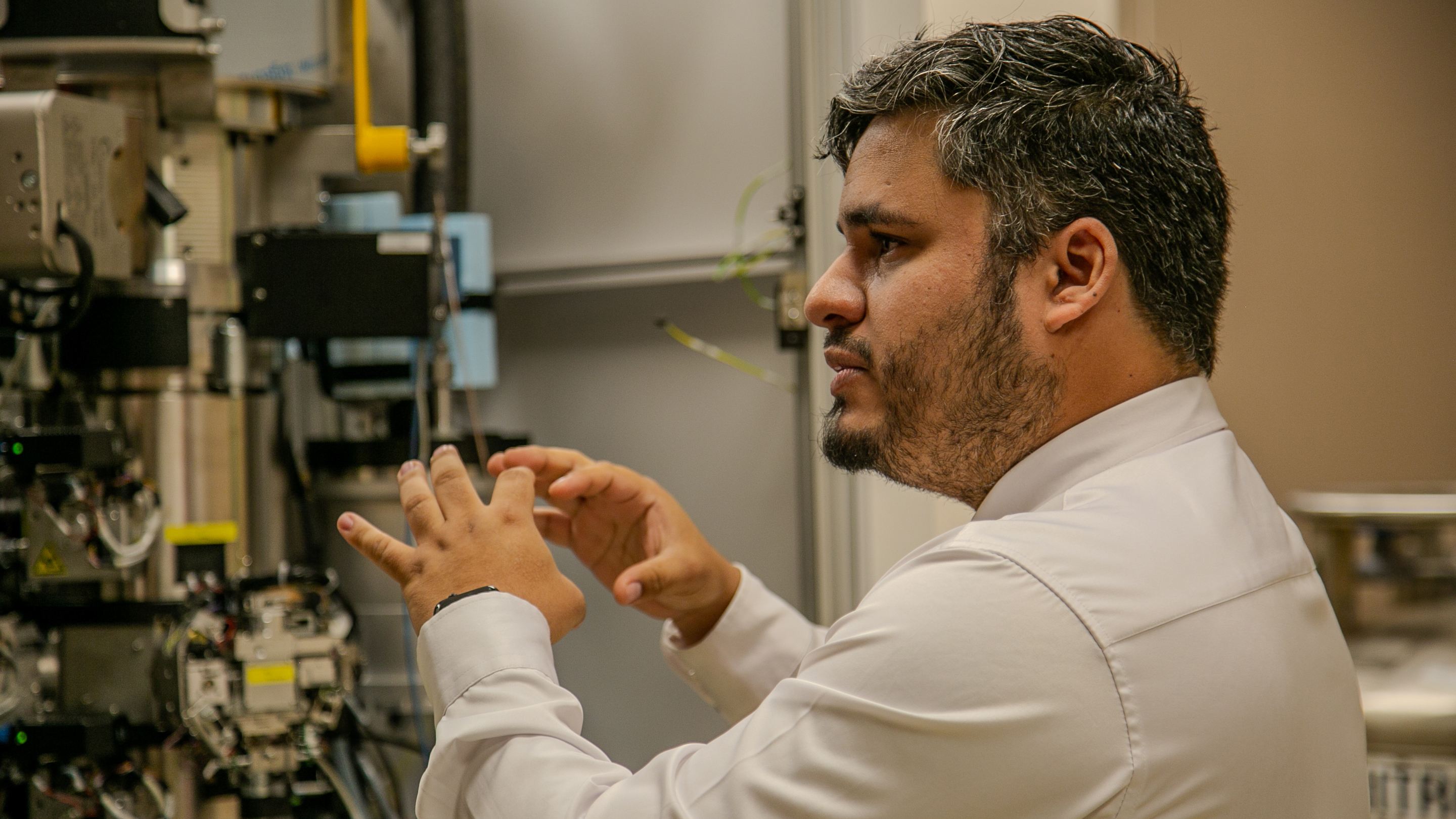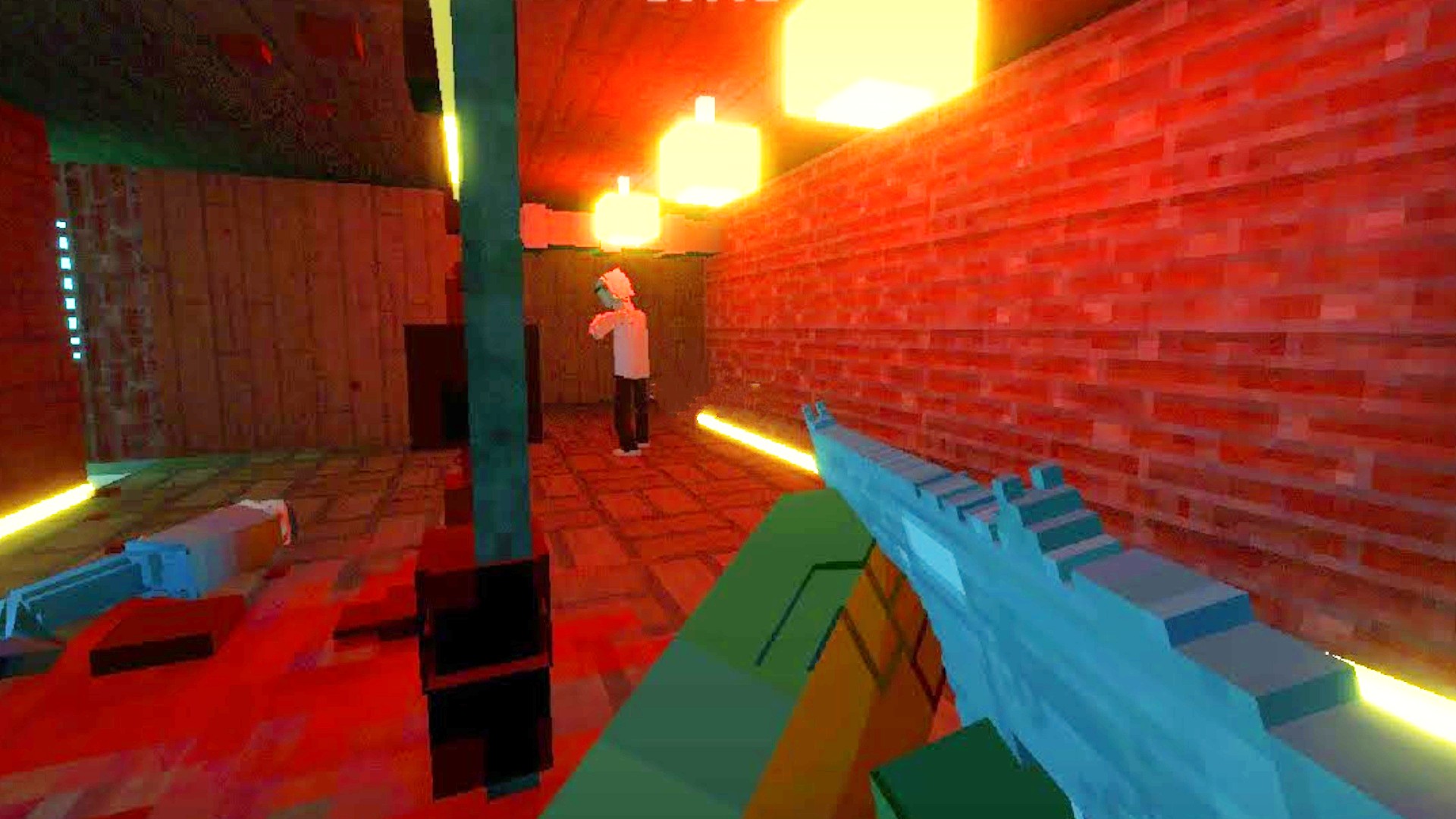Nebraska
New core facility will advance biomedical, ag sciences research

A new University of Nebraska–Lincoln core research facility shows promise to revolutionize how Nebraska scientists understand molecular foundations and bolster the university’s expertise in the biomedical and agricultural sciences.
The CryoEM Core Facility houses the state’s first cryo-electron microscope, and it is one of just a handful in the region. CryoEM microscopy is a powerful imaging technique that enables researchers to observe biological molecules, complexes and cells at near-atomic resolution.
Although the technology has existed for several decades, advancements in recent years have turned it into a leading tool for research in drug discovery and development, plant biology, infectious diseases, pathology, animal science and more.
Cryo-EM technology enables biological samples to be cooled to cryogenic temperatures — at least negative 153 degrees Celsius. This ultra-cold environment preserves the structure and function of biological specimens more effectively than traditional methods, making cryo-EM ideal for preserving proteins and providing a stable, controlled environment for working with biological samples.
UNL’s CryoEM Core Facility began operations March 19, with eight research groups already using the core. It is expected to strengthen UNL’s research collaborations with the other University of Nebraska institutions and attract new partnerships with other universities and companies across the Midwest, said Sherri Jones, interim vice chancellor for research and economic development.
“We are paving the way for transformative discoveries and research that advance the state of Nebraska, the nation and the world. … This is just the beginning of discoveries to come,” Jones said during a May 6 grand opening celebration.
There are currently three national cryo-electron microscopy centers in the United States, in California, Oregon and New York. UNL has already launched a partnership and training pipeline with one of those centers — the Pacific Northwest Center for Cryo-EM — which is expected to bolster UNL’s connection to national labs in the future.
Mark Button, dean of the College of Arts and Sciences, said the official grand opening marked “a great day for the advancement of science in the state of Nebraska.”
Button, along with other college and unit leaders, emphasized that teamwork was the key ingredient in opening the facility.
In September 2021, the Nebraska Center for Integrated Biomolecular Communication, known as CIBC, identified a need for cryo-EM capabilities to expand the university’s biomedical research capacity. Jim Takacs, professor emeritus of chemistry and then-director of CIBC, offered to allocate funding from the center’s National Institutes of Health Centers of Biomedical Research Excellence award to jump-start the effort.
From there, the Office of Research and Economic Development surveyed the campus to understand which research groups would use cryo-EM instrumentation if it became available. The Institute of Agriculture and Natural Resources’ Agricultural Research Division; College of Arts and Sciences; and College of Engineering indicated strong interest and provided financial support.
“What makes UNL a special place is that we are able to bring people together to do great things that can’t be done by any group alone,” Button said.
Lance Pérez, dean of the College of Engineering, said Wei Niu is an example of a faculty member who will use cryo-EM to advance her research program. Niu, associate professor of chemical and biomolecular engineering, is developing enzymes for building manmade molecules for use in industrial and commercial chemicals. She is using clean energy sources instead of the petroleum-based products that are typically used as raw materials.
Nebraska “punches way above its weight and can do big things” when faculty from across disciplines work together, Pérez said.
Other examples of how Husker researchers plan to leverage the core facility:
- Shi-Hua Xiang, associate professor of veterinary medicine and biomedical sciences and a member of the Nebraska Center for Virology, is developing inhibitor drugs to treat the Ebola virus. CryoEM can help virologists visualize how drugs structurally bind to receptors, which could lead to significant advancements in drug design and development.
- Joseph Yesselman, assistant professor of chemistry, designs three-dimensional RNA nanostructures and nanomachines. CryoEM can be used to resolve RNA nanostructures at atomic-level resolutions. His lab is already collecting preliminary data on one of the structures it is studying.
- Kurt Piepenbrink, assistant professor of food science and technology, studies how bacteria use extracellular structures to interact with their environment. Piepenbrink plans to work with the CryoEM Core Facility to determine the structural and functional relationships for large biomolecular complexes, especially those that are not compatible with traditional determination techniques such as X-ray crystallography and nuclear magnetic resonance spectroscopy.
Tala Awada, associate dean and associate director of the Agricultural Research Division, said cryo-EM capabilities would expand ARD’s research capacity in plant and animal health, while supporting training of the next generation of scientists and innovators.
“It is a testament to the faculty’s vision … and the campus rallied around them,” she said.
The Nebraska Center for Biotechnology provides day-to-day oversight and management of the core facility. In addition to CryoEM, the center houses four other core facilities and has a track record of success in managing life sciences research cores, said Jen Nelson, assistant vice chancellor for research and research integrity officer.
Center director Daniel Schachtman and Shelly Cutsor, director of research finance and information systems, oversaw renovation of the Ken Morrison Life Sciences Research Center, where the core facility is housed. The renovation opened space for high-throughput equipment, including a 200kV Glacios Cryo-EM Transmission Electron Microscope, a Falcon4i electron detector camera, aberration-free image shift and fringe-free imaging.
To store the massive amounts of data generated, Schachtman’s team worked closely with the Holland Computing Center and the University of Nebraska’s Information Technology Services to develop a sophisticated system for data storage and processing.
Schachtman also hired the core facility’s first director, Eduardo Romero Camacho, who joined the university in 2022 and had a pivotal role in the Morrison Center renovation and equipment installation.
Jiantao Guo, professor of chemistry and CIBC director; Mark Wilson, professor of biochemistry; and Limei Zhang, associate professor of biochemistry, provided scientific vision and oversight throughout the project. The CIBC External Advisory Committee shared input on how to establish the core facility, including instrumentation and staffing.
Jones thanked the university leaders who supported the project.
“Acquiring cutting-edge equipment is part of UNL’s role as the state’s Big Ten research institution. Equipment investments are crucial to positioning our faculty for grants and awards success; recruiting talented researchers and students; and offering our students high-quality research experiences.”

Nebraska
Nebraska Extension Introductory Level Crop Scout Training – 5/21/24 @ 8:30am
The introductory level crop scout training is designed for entry-level scouts who are working for crop consultants, industry agronomists or farm service centers in Nebraska and neighboring states. The training is also ideal for growers who scout their own fields or are interested in improving productivity, as well as for students being employed by agribusinesses.
The course, which will be held in-person, is from 8:55 a.m. to 5:10 p.m. with registration at 8:30 a.m. at the University of Nebraska’s Eastern Nebraska Research, Extension and Education Center which is located at 1071 County Road G, Ithaca, NE 68033. Nebraska Extension Educator Aaron Nygren says, “We look forward to providing participants a hands-on, in-person experience focusing on important crop scouting skills.”
Topics covered during the day include:
• Scouting Tips and Understanding Corn & Soybean Growth & Development
• Crop Diseases & Quiz
• Scouting Techniques – Soil, Tissue, Disease Samples & Drone Best Practices
• Identifying Weeds – Morphology, Using a Key to Identify Weed Seedlings
• Corn & Soybean Insect Scouting, Identification, Management
• Nutrient Deficiencies in Corn & Soybeans
• Hands on Practice
Some of the benefits past registrants stated the training provided included practical/working knowledge and better accuracy in field scouting. Other participants appreciated the hands-on, practical format. Past participants have consistently given the training high marks and state that the knowledge gained from attending improved their scouting skills.
Cost for the program is $100, which includes lunch, refreshment breaks, workshop materials and a 3 ring binder instruction manual. The take-home instruction manual includes a variety of reference materials that provide resources for crop scouting. For those attending the daylong training that don’t want a copy of the instruction manual, the fee is $60. Attendees should preregister to reserve their seat and to ensure workshop materials are available the day of the training session.
Certified Crop Advisor continuing education credits are being applied for with 6 credits in pest management, 1 in crop management and .5 in fertility/nutrient management.
To register or for more information, go to https://enreec.unl.edu/fieldcropscouttraining, contact Nebraska Extension at (402) 624-8030, or e-mail Aaron Nygren at anygren2@unl.edu. Preregistration requested by May 17 for meal planning purposes.
Extension is in the university’s Institute of Agriculture and Natural Resources.
Nebraska
Nebraska medical marijuana advocates surpass one of two key signature hurdles

LINCOLN — Nebraskans for Medical Marijuana announced Thursday it has likely crossed one of two significant hurdles as it tries to get the issue on the ballot for the third straight election year. Crista Eggers, campaign manager of Nebraskans for Medical Marijuana. Sept. 13, 2023.
Crista Eggers, campaign manager for the petition drive, said the group is confident it has collected the minimum required signatures for two petitions across at least 38 of the state’s 93 counties. That multicounty requirement is for at least 5% of voters in each county to sign.
“The finish line is absolutely in sight, but not without all hands on deck,” she said.
‘We need to come in strong’
Eggers declined to release the list of counties expected to qualify but said the campaign has at least 55,000 signatures on each of its petitions. Volunteers are now shifting their work to get at least 87,000 verified voter signatures on each petition before July 3.
However, volunteers are seeking many more signatures over that threshold, and more counties, to provide a buffer against any challenges, Eggers said. Volunteers with Nebraskans for Medical Marijuana sort through boxes of petitions submitted just before a deadline in 2022 to submit signatures to qualify for the November ballot. (Paul Hammel/Nebraska Examiner)
For example, in 2020, the campaign gathered enough signatures and passed the multicounty requirement but the measure was kicked off the ballot because it wasn’t a “single subject.” In 2022, the group tried again but fell short in gathering overall signatures and for qualifying counties.
This is why the effort kicked off earlier this time, with two petitions: one that would protect patients and caregivers and another that would set the regulatory environment for medical cannabis.
“We cannot come in here just crossing the finish line — we need to come in strong,” Eggers said. “We still have a lot of work ahead of us in the next 50 days.”
‘A really great beginning’
Last month featured one of the group’s largest pushes, with 45 events across the state in 22 counties on April 20, a date that holds significance for advocates of marijuana. The events stretched from Alliance in western Nebraska to Nebraska City, near the Iowa border.
Eggers said those events spread visibility as she and others fight for their loved ones or for themselves. Patients bear the weight of pressing for legalization, she said, “which is absolutely wrong.”
“It should not take mothers of sick children and individuals who have spouses on hospice at home,” she said. “They shouldn’t have to be out gathering these signatures, but that is the reality, and this is how important it is for all of these individuals.” Lisa Post, at left, holds a Nebraskans for Medical Marijuana T-shirt beside Trisha Petersen on Wednesday, Sept. 13, 2023, on Lincoln, Neb. The two became best friends during the campaign. (Zach Wendling/Nebraska Examiner)
Lia Post of Springfield, who is one of the original signature gatherers, says she is involved with the petition campaign because she has a rare illness called complex regional pain syndrome.
“I think it’s a really great beginning,” Post said of Thursday’s milestone. “But we’re really far from the end, and I hope people get involved.”
Federal reclassification moves ahead
Thursday’s announcement came the same day the U.S. Justice Department formally moved ahead in reclassifying marijuana as a less dangerous drug.
The Drug Enforcement Administration will next take public comment on the proposed shift, which would reschedule marijuana from a Schedule I drug, such as heroin and LSD, to a Schedule III substance, like ketamine and some anabolic steroids, which have medicinal properties.
Gov. Jim Pillen said in September that legalizing marijuana “poses demonstrated harms to our children” and that access to medical marijuana should only happen if it obtains approval from the U.S. Food and Drug Administration.
Thirty-eight states have legalized medical marijuana while 24 of them, plus Washington, D.C., have also legalized recreational use. The other states, including Nebraska, allow limited access to cannabis products with little to no THC, according to the Pew Research Center.
Eggers said the reclassification doesn’t change what the Nebraska campaign is doing but underscores that what the advocates are doing is right.
“Now we know, without a doubt, that this is a medicine and patients in our state deserve this as a treatment option,” Eggers said. “We as a state have to make that stance, and we have to solidify that.”
Nebraska Examiner is part of States Newsroom, a nonprofit news network supported by grants and a coalition of donors as a 501c(3) public charity. Nebraska Examiner maintains editorial independence. Contact Editor Cate Folsom for questions: info@nebraskaexaminer.com. Follow Nebraska Examiner on Facebook and Twitter.
Nebraska
Nebraska 511 reports semi-fire on I-80 westbound

LINCOLN, Neb. (KOLN) – The Nebraska 511 reported that a semi-fire has closed I-80 westbound near Seward at mile marker 377.
According to the Nebraska 511, the right lane is currently blocked, and speed in the area has been reduced.
This is an ongoing incident. Stay connected to 1011now.com for the latest information.
Click here to subscribe to our 10/11 NOW daily digest and breaking news alerts delivered straight to your email inbox.
Copyright 2024 KOLN. All rights reserved.
-

 News1 week ago
News1 week agoSkeletal remains found almost 40 years ago identified as woman who disappeared in 1968
-

 World1 week ago
World1 week agoIndia Lok Sabha election 2024 Phase 4: Who votes and what’s at stake?
-

 Politics1 week ago
Politics1 week agoTales from the trail: The blue states Trump eyes to turn red in November
-

 World1 week ago
World1 week agoBorrell: Spain, Ireland and others could recognise Palestine on 21 May
-

 Movie Reviews1 week ago
Movie Reviews1 week ago“Kingdom of the Planet of the Apes”: Disney's New Kingdom is Far From Magical (Movie Review)
-

 World1 week ago
World1 week agoUkraine’s military chief admits ‘difficult situation’ in Kharkiv region
-

 World1 week ago
World1 week agoCatalans vote in crucial regional election for the separatist movement
-

 Politics1 week ago
Politics1 week agoNorth Dakota gov, former presidential candidate Doug Burgum front and center at Trump New Jersey rally















